3D Printing, the major additive manufacturing technology, plays an important role in manufacturing industry. Let’s learn and discover 3D Printing solution.
3D Printing, also known as additive manufacturing (AM), is the preferred rapid prototyping method nowadays; utilizing 3D Printing to create custom parts and end-use functional parts is available and accessible. What is 3D Printing? How does it work? This article covers the basic knowledge of 3D Printing, let’s get started with 3D Printing solution.
Generally, 3D Printing is a method of additive manufacturing where materials are added layers and layers, and eventually a solid object is created. Imagine how is sand dune forming: the sand is deposited by the wind or water. It might not be visible at first, but when the sand deposition is thicker and thicker, the sand dune is shaping.
Distinguished from traditional manufacturing process, 3D Printing is a process of adding materials to create a product instead of machining on a block of material. The additive nature makes 3D Printing a unique manufacturing method, and the advantage is obvious: material flexibility. Besides, there are many technologies of 3D Printing, including FDM, DLP, SLA, SLS, MJF, SLM, etc. Different techniques may use different material, such as FDM prints plastic (PLA, ABS, etc.) filaments, SLA cured liquid resins, SLS/MJF sinters and fused nylon powders, and SLM melts and fused metal powders. Amongst, SLA, stereolithography, is being able to create parts with smooth surface finish as the material of SLA 3D Printing is liquid resins. Materials are largely determining the final parts.
3D printer is the machine for 3D Printing. Similar as other traditional manufacturing process, 3D Printing produces parts based on CAD (computer-aided design) models. Resembling printing paper by a printer, printing part with 3D printing needs a file. But the difference is that the defacto file format of 3D Printing is STL file. It is said that STL is the acronym of StereoLithography, and it is also called Standard Triangle Language or Standard Tessellation Languages.
STL files are the translations of 3D models in which all information is stored. It consists of a series of linked triangles that describe the surface geometry of a 3D model without representing color, texture, or other common model attributes. The more complex the 3D model, the more triangles are used, and the higher the resolution.
With the development of 3D printing techniques, 3D printers, and 3D printing materials, the technology has been applied in various applications as a robust manufacturing solution. 3D Printing is used by different groups, including business, engineers, designers, hobbyists, and startups who can use 3D Printing as a great way to optimize production development and process. No matter fast prototype for validation, small batch to mass production, custom functional parts, or assemblies, 3D Printing is the versatile solution.
To understand how to work with 3D Printing, a critical step is to figure out what you can do with a printer. As mentioned above, before 3D Printing, CAD design should be prepared. Then, CAD design should be converted into an STL file. STL storage the surface data (triangles/ polygons) of a 3D model. Please keep in mind that there are some key considerations before converting a 3D model into STL file, such as size, resolution, water tightness, etc. To avoid common errors of a STL file, please learn more here.
However, 3D printer is not able to read STL file directly. When generating an STL file, you are ready to imported the file into a slicer software. This step called slicing. Slicer will analyze and convert the STL file into G-code, a numerical control programming language that 3D printer can read and understand. Besides, slicer allows you to customize the printing parameters, such as adding supports, setting layer height, and part-building orientation.
When the G-code file is ready, it is time to import the file into the printer, and start printing the model. Take SLA printer as an example. SLA printer uses UV-laser light to cure liquid resins layer by layer. Before printing, checking the material pool, scraper, laser light, etc. is necessary.
Dimensional accuracy is related to the level of detail each process can achieve and the build quality of each 3D printer. Processes that offer higher accuracy can often create parts with finer features. Industrial-grade machines offer higher accuracy and repeatability than desktop printers. Layer height (mainly related to FDM) affects dimensional accuracy.
When designing a prototype part that will be in contact with other parts, you must define the necessary tolerances. Since choosing a process with higher dimensional accuracy may increase your costs, you can also finish features with critical dimensions or small details after 3D printing (for example, by drilling or tapping).
The build size determines the maximum size of the part that the 3D printer can produce. For parts that exceed typical build sizes, consider migrating to other technologies or breaking the part into multiple parts to be assembled later.
The support structure determines the freedom of the design and affects the amount of post-processing expected. Processes that do not require support, such as SLS or industrial FDM using Ultem, have fewer limitations and can produce free-form structures more easily.
Another important aspect to consider when choosing a technology is the effect of layer height.
Due to the additive nature of 3D printing, the layer height determines the smoothness of the printed surface and the smallest feature size (in the Z-direction) that the printer can produce. Using smaller layer heights makes the step effect less prominent and helps produce more accurate surfaces.
If you want to build a basic prototype on a budget - visualize a part or design, check the look and feel, and have a rough idea of form, fit and function - FDM is probably the best 3D printing option.
It's important to remember that FDM uses filament-based thermoplastics. Therefore, parameters like infill and layer resolution will affect the accuracy and cost of your custom part. The more infill you have, the more material you will need, raising the cost.
As an extrusion-based printing method, FDM has its design limitations and, in many cases, requires support structures. FDM machines can only do one part at a time, so SLS and MJF may be more suitable if you have more parts. These technologies are suitable for batch prototyping because they can print multiple parts simultaneously.
If your goal is to build more complex, highly accurate prototypes to test form, fit, and function (or if you want to test the durability and strength of a part), you will get the most out of SLA, SLS, and MJF. For more complex prototyping, SLA, SLS, and MJF are more efficient, easier to scale, and in many cases, the most cost-effective option, especially for the quality of parts you get.
Regarding the materials used in these processes, SLA uses liquid photopolymer resins, while SLS and MJF use powder materials, so there is nothing to remove after printing. SLA uses support structures, so if you're printing complex or detailed features, you'll want to consider removal time.
Post-processing time is something to consider, especially when prototyping at higher volumes. For SLA, time is needed to cure the liquid resin and ensure the part dries properly (refer to the additional time needed to remove the support).
In contrast, powder materials for SLS and MJF require time to cool and need to be able to be easily cleaned. Complex or detailed features may cause internal holes/channels to break, clog or fill without cleaning. The design should allow for cleaning, de-powdering and sufficient cooling to ensure a highly accurate prototype.
Another important aspect to consider when choosing a technology is the impact of layer height.
Due to the additive nature of 3D printing, layer height determines the smoothness of the as-printed surface and the minimum feature size a printer can produce (in the z-direction). Using a smaller layer height also makes the stair stepping effect less prominent and helps produce more accurate curved surfaces.
If you're looking to build a basic prototype on a budget - to visualize a part or design, check the look and feel, and have a rough idea of form, fit and function - FDM may be the best 3D printing option.
It's important to remember that FDM uses filament-based thermoplastics. As such, parameters like infill and layer resolution will impact the accuracy and cost of your custom parts. The more infill you have, the more material you will need, raising the cost.
As an extrusion-based printing method, FDM has its design limitations and requires support structures in many instances. FDM machines can only make one part at a time, so if you have higher volumes of parts, then SLS and MJF may be more suitable. These technologies are suitable for volume prototyping as they can print multiple parts simultaneously.
If you aim to build more complex, highly accurate prototypes to test form, fit and function (or want to test parts for durability and strength), you will get the most out of SLA, SLS and MJF. For more complex prototyping, SLA, SLS and MJF are more efficient and easier to scale, and in many cases, the most cost-effective option, especially for the part quality you get.
Regarding the materials these processes use, SLA uses liquid photopolymer resins, and SLS and MJF use powder materials, so there's nothing to remove after printing. SLA does use support structures, so if you're printing intricate or detailed features, you'll want to factor in removal time.
Post-processing time is important to consider, especially when prototyping at higher volumes. With SLA, time is required to cure liquid resin and ensure parts dry properly (referring back to the extra time needed to remove supports)
In contrast, SLS and MJF powder materials require time to cool and need to be able to be cleaned easily. Intricate or detailed features could result in cracked, blocked or filled internal holes/channels that can't be cleaned. Designs should allow for cleaning, powder removal and sufficient cooling to ensure highly accurate prototypes.
3D design
The design process for 3D printing is first to model the model through computer modeling software and then "partition" the completed 3D model into layer-by-layer sections, i.e., slices, which guide the printer to print layer-by-layer.
The standard file format for collaboration between the design software and the printer is the STL file format. An STL file uses triangular surfaces to approximate the surface of an object. PLY is a scanner that generates 3D files by scanning, and the resulting VRML or WRL files are often used as input files for full-color printing.
Slicing
The printer reads the cross-sections from the file, prints them out layer by layer using liquid, powder, or sheet materials, and then bonds the layers together in various ways to create a solid. The special feature of this technology is that it can produce objects of almost any shape.
The thickness (i.e., Z-direction) and the resolution in the planar direction (i.e., X-Y-direction) of the sections produced by the printer are measured in dpi (pixels per inch) or microns. The typical thickness is 100 microns, i.e. 0.1 mm, but some printers such as the ObjetConnex series and the 3D Systems' ProJet series can print in layers as thin as 16 microns. In the flat direction, it is possible to print at a resolution similar to that of a laser printer. The printed 'ink droplets' are typically 50 to 100 microns in diameter. The production of a model by conventional methods usually takes from a few hours to a few days, depending on the size and complexity of the model. With 3D printing, the time can be reduced to a few hours, depending on the printer's performance and the model's size and complexity.
Whereas traditional manufacturing techniques such as injection molding can produce large quantities of polymer products at a low cost, 3D printing can produce relatively small quantities faster, more flexibly, and lower cost. A desktop-sized 3D printer is all a designer or concept development team needs to make a model.
Finishing the print
The resolution of a 3D printer is sufficient for most applications (where curved surfaces can be rough, like jagged teeth on an image), and higher resolution items can be obtained by first producing a slightly larger object with a current 3D printer and then lightly sanding the surface to produce a smooth "high resolution " objects.
Some technologies can print on multiple materials at the same time. Some techniques also use support in the printing process. For example, when printing objects with an upside-down shape, something easily removable (such as a soluble material) is used as a support.

Image Source: my3dconcepts
3D printing focuses on creating parts by building objects layer by layer. 3D printing technology offers many advantages over traditional manufacturing techniques such as CNC machining.
Increased manufacturing speed
One of the main advantages of 3D printing is the speed at which parts can be produced more efficiently than traditional manufacturing methods. Models with the appearance of complex designs can be exported from the software and produced using a 3D printer in a matter of hours. This advantage allows design concepts to be validated and iterated upon quickly.
Whereas in the past, it could take days or even weeks to create a prototype through traditional machining methods, 3D printing will get the model into the hands of the designer in a matter of hours. While more industrial-grade 3D printing machines take longer to print and post-process parts, there are huge time-saving advantages to producing final functional parts in small to medium batches compared to traditional manufacturing techniques.
Increased design freedom
Traditional manufacturing methods are highly restrictive in terms of what can be manufactured. Design requirements such as the angle of the draw die undercuts and tool entry are unsuitable.
For 3D printing, there may be some limitations on the smallest dimensional features that can be accurately printed and defined. In most cases, however, the main limitations revolve around optimising the print orientation to reduce support dependencies and the likelihood of print failure. This gives the designer a great deal of design freedom and allows very complex geometries to be easily created.
Customisable
3D printing offers greater freedom of design definition and allows for fully customisable designs. As current 3D printing technology can only produce a few parts simultaneously, it is well suited to customisation in small batches. The medical and dental industries have embraced the concept of customisation to produce bespoke prostheses, implants and dental aids, among others. From bespoke premium sports equipment perfectly suited to athletes to custom sunglasses and fashion accessories, 3D printing, as defined, can cost-effectively produce custom parts in a single run.
Sustainability
Traditional manufacturing methods (such as CNC milling or turning) remove excess material from the initially defined material, resulting in a large amount of scrap. 3D printing, on the other hand, usually uses only the necessary amount of material to manufacture the part. Most of the raw materials used in the process can be recycled and reused in multiple projects. As a result, the 3D printing process produces virtually no scrap.
One-piece manufacturing forming
Manufacturing in one step with a 3D printer and without the intervention of a machine operator during the manufacturing phase. Once the CAD design is complete, it can be uploaded to the machine and printed in one step in a matter of hours.
The ability to produce parts in one piece greatly reduces the reliance on different manufacturing processes (machining, welding, painting). It gives designers greater control over the quality of the final product.
Cost reduction
Manufacturing costs can be divided into the machine running, material, and labour costs. And one of the main advantages of labour costs in 3D printing is the low cost. Apart from post-processing, most 3D printers require only one or two operators. The machine then follows a fully automated process to produce the parts. Compared to traditional manufacturing, which usually requires skilled machinists and operators, the labour costs of 3D printers are almost zero.
The cost of small-batch 3D printing is extremely competitive when compared to traditional manufacturing processes. Producing proven shapes and assembled prototypes is much cheaper than other manufacturing methods, such as injection moulding. It is often competitive in the manufacture of one-off functional parts. As production volumes increase, traditional manufacturing techniques become more cost-effective, making 3D printing an important addition to traditional manufacturing.
Depending on the 3D printing technology you are using, materials usually come in the form of filaments, powders, or resins. The two main groups of 3D printing materials are polymers (plastics) and metals. In contrast, other materials such as ceramics (one of the newest materials used for 3D printing) or composites (ideal for strong, lightweight parts) are also available.
Polymers can be further subdivided into thermoplastics and thermosets. The main difference between these two names is how they behave when heated. When you heat thermoset plastics, the material becomes stronger but cannot be reshaped or heated after the initial molding. In contrast, you can reheat, reshape and cool thermoplastics without causing chemical changes.
The different techniques are designed to print more ideally with certain materials than others, with the level of precision and material cost becoming mitigating factors.
Thermoplastics are the most commonly used type of plastic. The main feature of thermosets is that they can undergo numerous melting and curing cycles. This means that you can reverse thermoplastic heating and molding process into the desired shape.
Because no chemical bonding occurs during the heating and forming of thermoplastics, you can recycle or melt and reuse them. One way to think of thermoplastics is to compare them to butter. You can melt and re-solidify butter repeatedly, with its properties changing only slightly with each melting cycle.
Thermoplastics have good mechanical properties and high impact, abrasion, and chemical resistance. They can also be filled with carbon, glass, or other additives to enhance their physical properties. Engineering thermoplastics, such as nylon, PEI, and ASA, are widely used to produce end-use components for industrial applications.
Thermoplastics are generally best suited for manufacturing functional prototypes and some end-use components. It is worth noting that thermoplastic products are not suitable for load-bearing applications.
Thermosets (also known as thermoset polymers or plastics), in contrast to thermoplastics, remain solid after a single round of curing. They are more suitable for aesthetically demanding applications as they produce parts with a smooth surface (similar to that produced by injection molding) and fine detail.
They are generally very hard but more brittle than thermoplastics, so they are unsuitable for functional applications. Special resins are available, designed for engineering applications (mimicking the properties of ABS and PP) or dental inserts and implants.
Common thermosetting resins include phenolic, epoxy, silicone, and polyurethane, which offer a variety of benefits for production. Epoxy resins, for example, are tough, resistant to a wide range of chemicals, and highly elastic.

The use of rapid prototypes for 3D design and manufacture is limited only by the designer's creativity. They can be used at all stages of the design and manufacturing process. The following are the most popular use cases.
Proof of concept
A common application is proof of concept. 3D prototypes can be produced quickly and early in the design process to assess product feasibility, facilitate design team discussions, generate interest from key stakeholders (such as marketing and investors) and compare different design options. The main advantage of rapid prototyping processes for proof-of-concept applications is improved cost and time for 3D prototyping.
Design optimization
Rapid prototyping is also a cost-effective way to accelerate optimization, including product design and development. A design team can assess the overall functionality of a product or focus on key attributes (e.g., geometry, fit, material properties, manufacturability) early in the design process without incurring the costs associated with traditional manufacturing processes.
High fidelity prototyping
Due to the versatility of additive manufacturing processes and materials, rapid prototyping techniques can be used to create high-fidelity prototypes closely related to the final product. This often allows designers to demonstrate product functionality or perform reliability testing at a lower cost or faster than traditional manufacturing processes.

Image Source: smartechanalysis
The advantage of 3d printing is that it can provide small batches and a wide variety of prototypes, and it can also help all kinds of enthusiasts to print their artwork. And with the development of this technology, the cost of 3d printing is gradually decreasing, and many 3d printing companies offer a professional services. It not only helps you check whether your drawings are ready to print but also enables you to get a real-time quote online and a dedicated account manager to help you solve problems later.
Please feel free to try instant quoting on our website or contact us hello@wenext.com if you are interested.

3D printing technology is reshaping the landscape of the cultural and creative industries in application scenarios such as customized cultural product creation, film & TV IP derivative development, and game merchandise production.
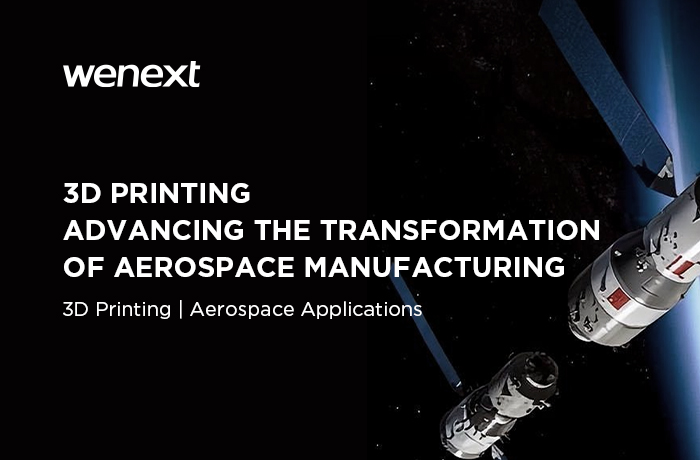
3D printing technology has become a key force driving the advancement of manufacturing in the aerospace sector.
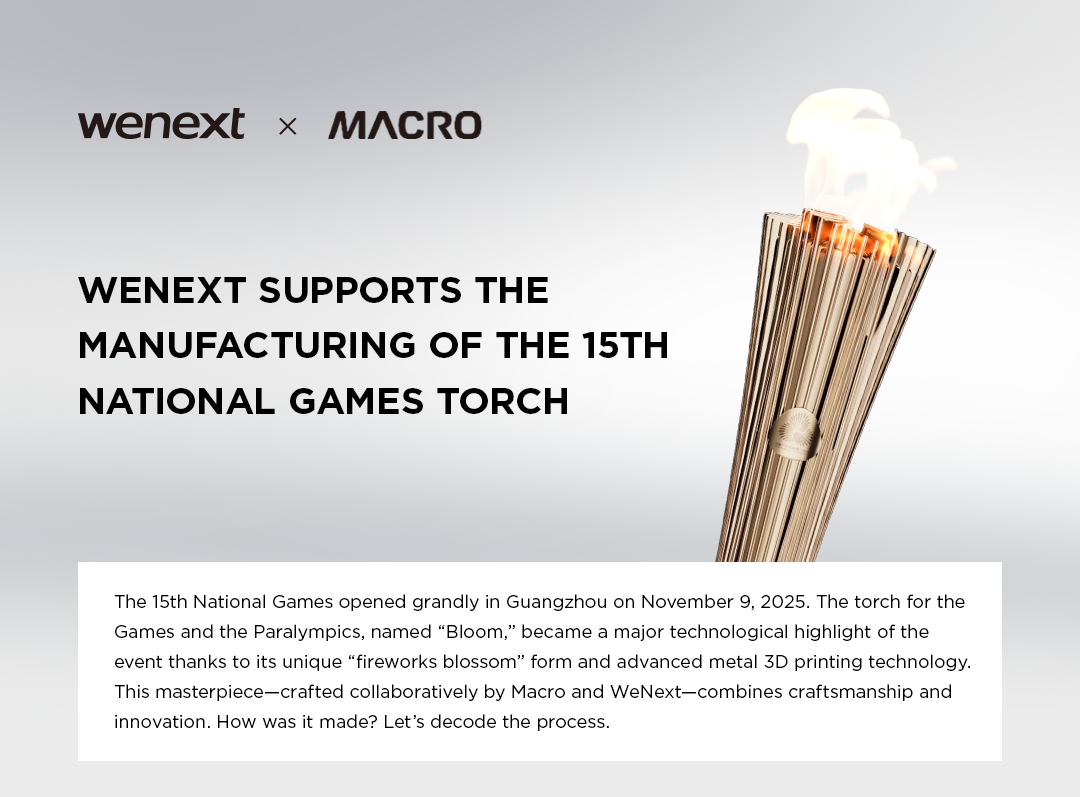
Decoding the manufacturing journey of the “Bloom” torch for the 15th National Games, WeNext broke through the bottlenecks of traditional processes through metal 3D printing technology, transforming Macro’s design concept into reality.
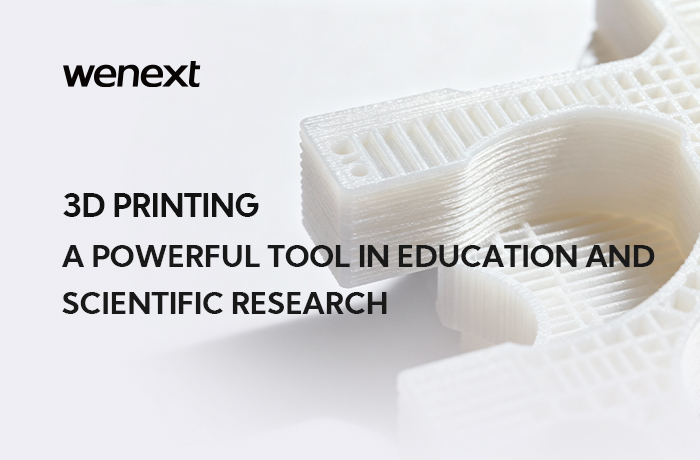
Wenext offers one-stop solutions ranging from rapid prototyping to professional-grade part manufacturing, providing efficient, specialized, and easily accessible manufacturing support for education and scientific research

3D printing technology is reshaping the landscape of the cultural and creative industries in application scenarios such as customized cultural product creation, film & TV IP derivative development, and game merchandise production.

3D printing technology has become a key force driving the advancement of manufacturing in the aerospace sector.

Decoding the manufacturing journey of the “Bloom” torch for the 15th National Games, WeNext broke through the bottlenecks of traditional processes through metal 3D printing technology, transforming Macro’s design concept into reality.

Wenext offers one-stop solutions ranging from rapid prototyping to professional-grade part manufacturing, providing efficient, specialized, and easily accessible manufacturing support for education and scientific research
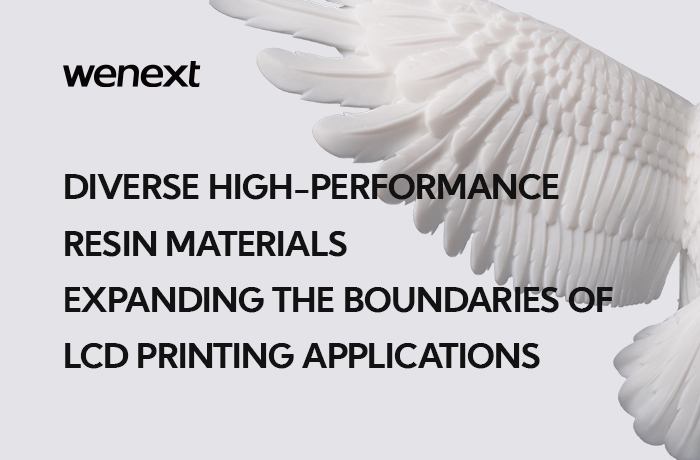
Wenext launches an LCD printing materials application feature, interpreting the unique properties of diverse high-performance printing materials to provide reference for customers in material selection and application for LCD printing.
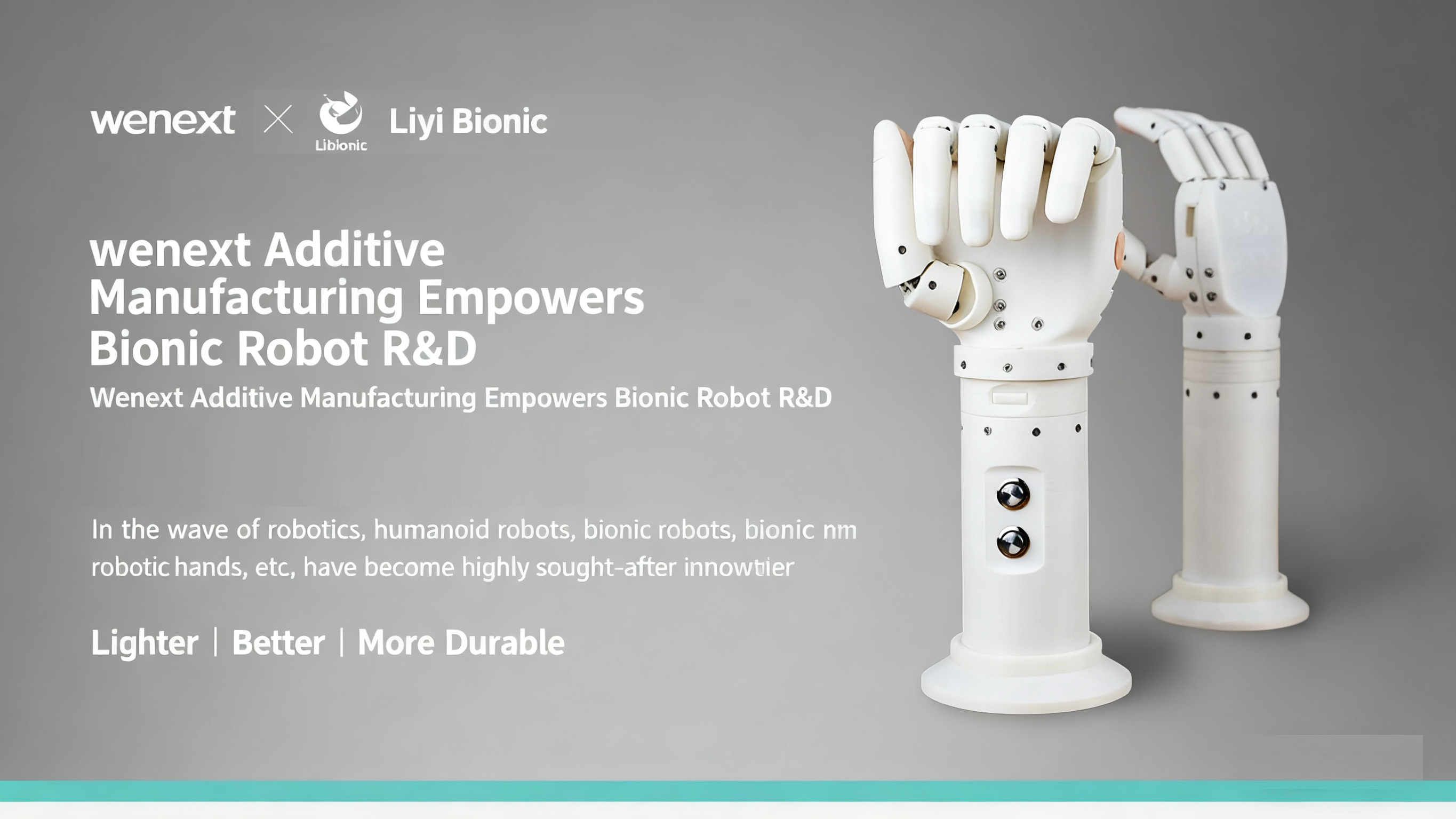
Wenext and Liyi Bionics join hands and, with 3D printing technology as the core manufacturing approach, create a completely new paradigm for the research, development, and mass production of mechanical bionic hands.
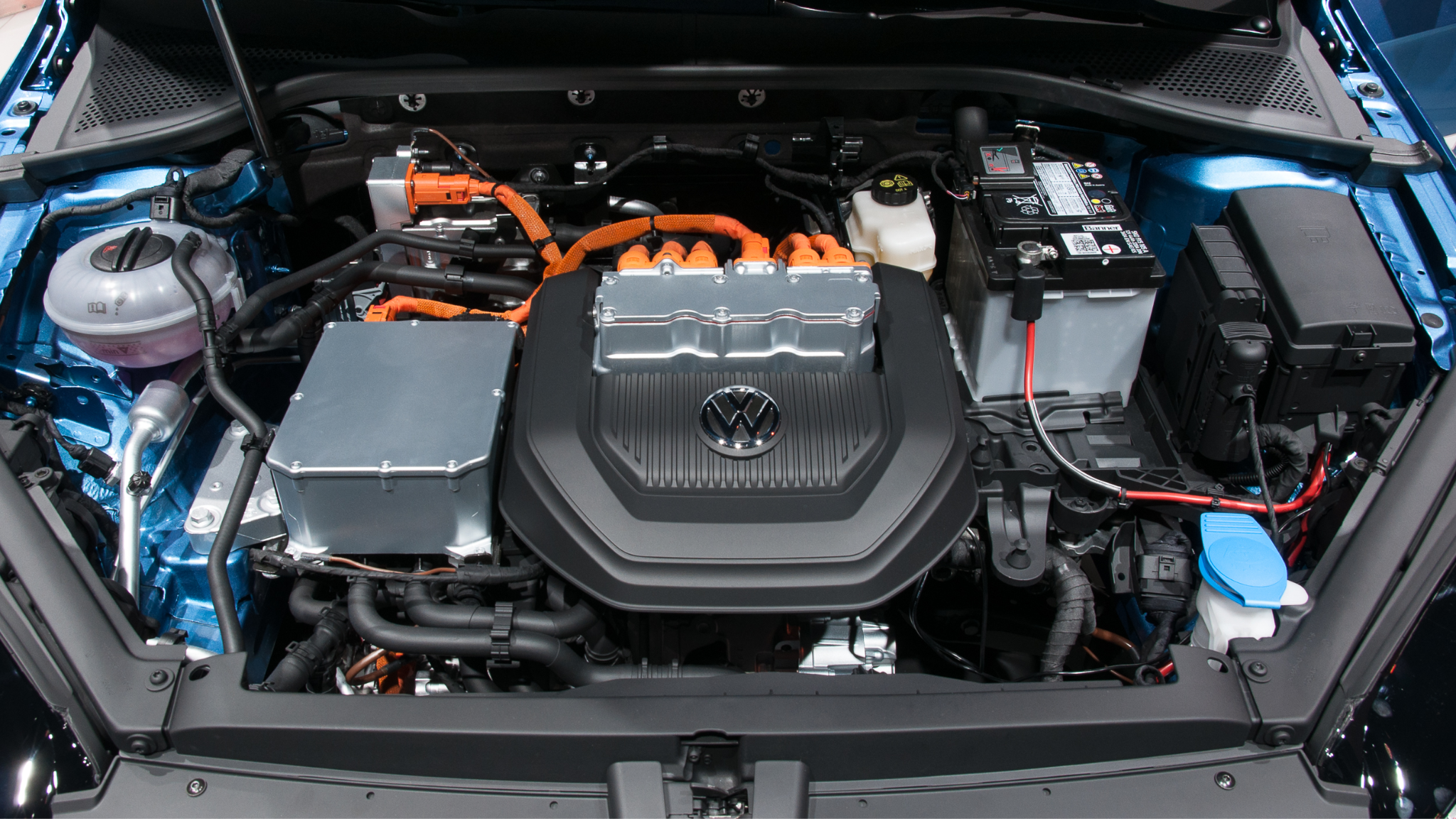
The integration of 3D printing has not only sped up the design process but also introduced unprecedented flexibility and innovation into the automotive industry
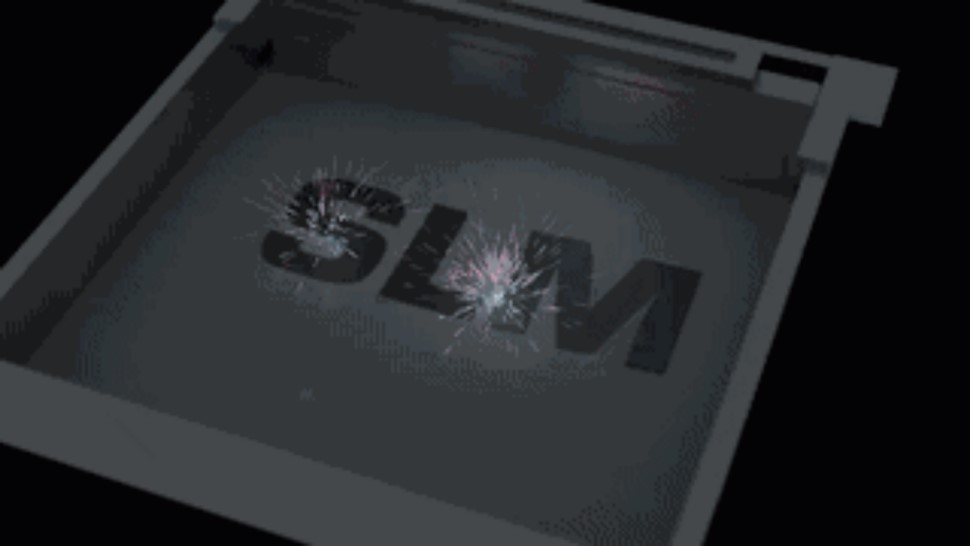
With its unique advantages, SLM metal 3D printing has emerged as a solution for manufacturing intricate metal structural components.
New materials and new technology make 3D Printing silicone possible now! Discover more in this article!

See what toys you can 3D print for your cats, check out the best 3D printed cat toys of 2023 here.
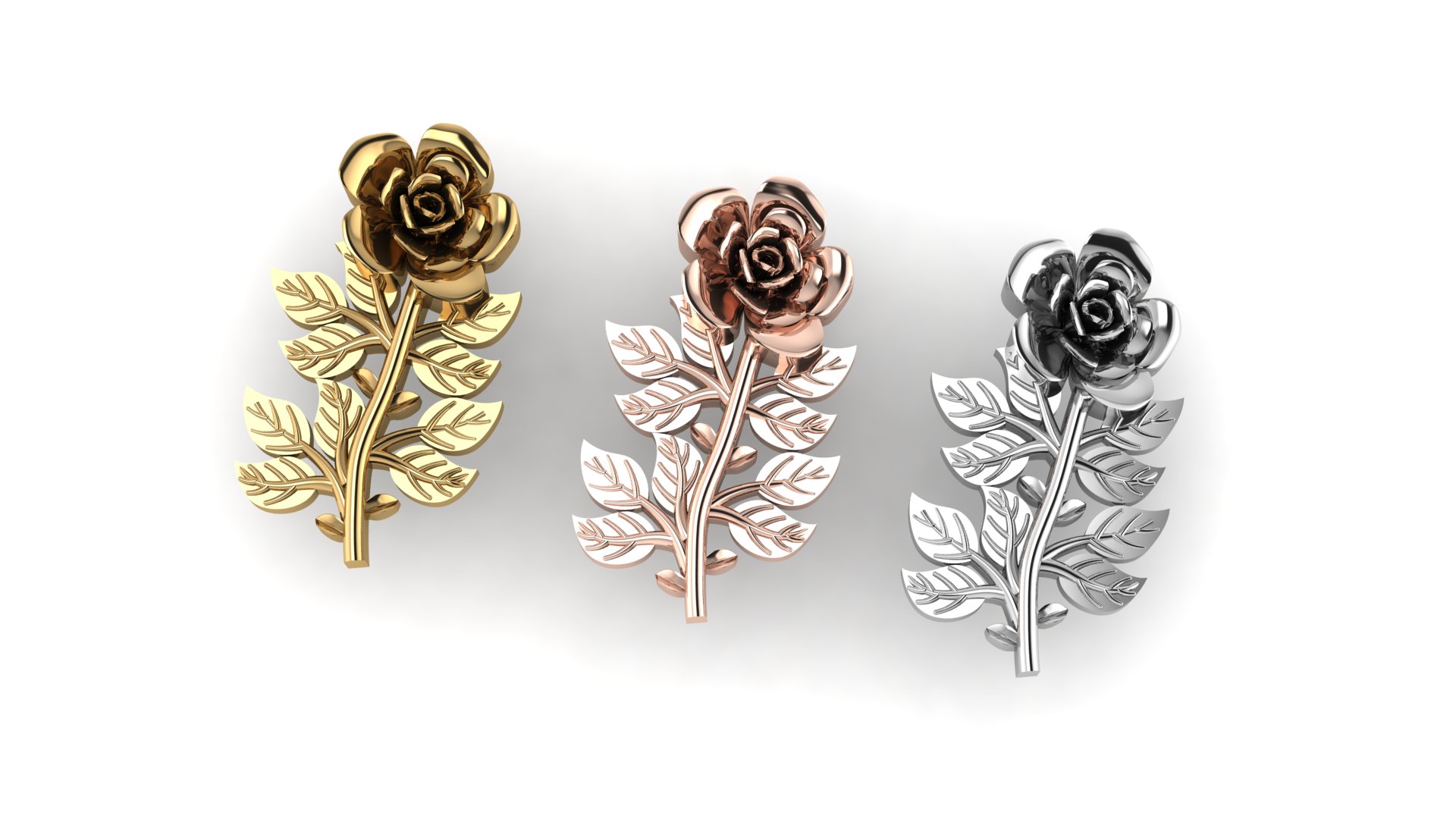
Want to make 3D printed jewelry for yourself or gain inspirations from jewelry 3D models? Check these jewelry STL files out!
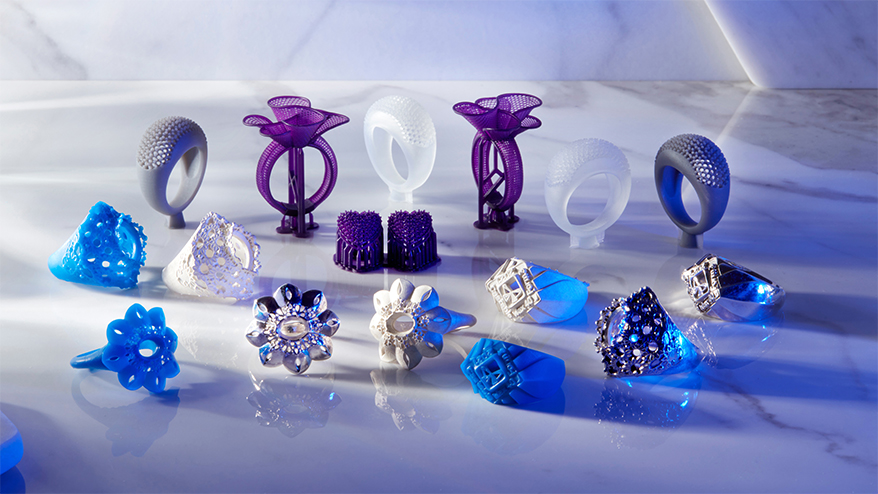
Whether you own a jewelry business or not, additive manufacturing play an important in nowadays jewelry industry. Check out reasons to choose 3D printed jewelry in this article!

©2019-2025 WeNext Technology Co., Ltd. All Rights Reserved.
This website uses cookies for better personalized services. By using our websites, you agree to this use. Privacy Policy
We use cookies to improve your experience, check out Privacy Policy.